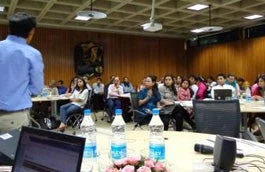
Language discrepancy hindrance to implement projects at grassroot level
WB uses social sites to open itself to public
Clearly, more languages will be a priority for the open data team and it has been identified in our strategy for improving the data site. Our strategy is to have partial translations where we will translate the data home page into more languages and translate country pages into local languages.
As for the data questions, here are some of the resources I pointed people to:
More poverty data
I demonstrated Povcalnet a number of times to let people know exactly where they can get the details behind the Bank’s poverty figures and how they can compute some of their own aggregates.
More timely data
I showed people how to get to the Global Economic Monitor data set in the data catalog which is updated daily and provides daily, weekly, monthly, and quarterly trade and financial indicators. I also mentioned the popular prospects daily blog. And in one case, someone identified the blog to me saying it was his favorite among the 20 some blogs he read daily.
More information on data sources
I pointed people to the about tab on the data site. Not only does it have documentation on how we classify economies, frequently asked questions, and information about data updates, it also contains a section on the World Development Indicators with detailed documentation on many development topics and indicators.
Differences between World Bank data and modeled data
I pointed people to the indicator definitions which point out when some indicators are modeled estimates or discussed vintage differences such as waiting for adjustments to census results to take into account undercounting. And these conversations also touched on the efforts by the World Bank to support statistical capacity in our client countries.
I hope some of you will have the opportunity to attend an open development roadshow. But if you have suggestions or questions, don’t wait for our visit, post them now on this blog.


Join the Conversation